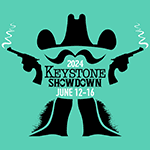19Editor’s Note: In 2016, we posed this question to some of the top breeders in the industry. With breeding and foaling season well underway, we thought it was an interesting topic to revisit again in 2019.
It is breeding and foaling season, and with all the adorable babies being born, we started wondering if it is possible to evaluate a young foal and determine its future?
Most foals are cute when they are born, but which ones are going to be the next World Champions? We posed this question to some of the top breeders in the industry.
What differentiates the better ones from the pack? Or, is it just a shot in the dark to predict their future success when they are so young?
Let’s find out what they had to say.
Ann Myers – I can tell a lot about a young foal, but I’ve had 35 years of looking at them at a young age and getting to see what they grow up to become. I don’t think it’s a crap shoot if you know what you are looking for. Most of them look cute when they are very young. I think they are most photogenic when they are three weeks old, and sometimes, it takes that long for them to keep their legs underneath them. Look for a foal that is balanced conformation wise. Balance is key to proper movement. Then, there are the ones who have an extra amount of charisma that you can see early on – the ones who wear their happy ears and have an elegance about them when they move.
Some traits can be learned, but it’s not a bad idea to be sure they start with a sweet disposition. Seeing a foal in person can tell you a lot. At three weeks old, most foals look good but check to see if they still look as good at three months self-correct.
 Debbi Trubee – You can tell what they are when they are born. There are some exceptions to the rules, but the bottom line is a baby should be square made from the get-go – hocks up under them, upright in front, length of back in proportion, wither that sits back on their top line. Length of the pastern is a huge deal to me, and the babies born with really long pasterns are always going to have long pasterns and will flip their feet. Low hocks and short cannon bones are a must as well as a deep heart girth. I don’t want to see a baby that looks like a hotdog with four toothpicks holding it up. The basic structure is what it is and will dictate the quality of mover that baby will ultimately be.
Debbi Trubee – You can tell what they are when they are born. There are some exceptions to the rules, but the bottom line is a baby should be square made from the get-go – hocks up under them, upright in front, length of back in proportion, wither that sits back on their top line. Length of the pastern is a huge deal to me, and the babies born with really long pasterns are always going to have long pasterns and will flip their feet. Low hocks and short cannon bones are a must as well as a deep heart girth. I don’t want to see a baby that looks like a hotdog with four toothpicks holding it up. The basic structure is what it is and will dictate the quality of mover that baby will ultimately be.
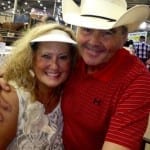 Mary and Tom Robertson – This is an excellent question. In evaluating foals, it is difficult to determine much in the first 24 hours, as they need to “unfold” from their previous environment. At that point, we are looking at structure – length of the back, neck, and croup. We look at where the neck comes out of the shoulder, hence, the slope of the shoulder. The shape of the head is evident at this point. A big eye and small muzzle rarely ever change. These components of the structure are the foundation that the developing foal is based upon. Indeed, we look at legs at this point as well, but those tend to change as the foal strengthens and matures. We certainly like to see muscling with some width and strength. From here on, we reevaluate every 30 days, as they begin to pack on body and substance, and they take on shape. As they mature, we can only enhance what they were born with from day one.
Mary and Tom Robertson – This is an excellent question. In evaluating foals, it is difficult to determine much in the first 24 hours, as they need to “unfold” from their previous environment. At that point, we are looking at structure – length of the back, neck, and croup. We look at where the neck comes out of the shoulder, hence, the slope of the shoulder. The shape of the head is evident at this point. A big eye and small muzzle rarely ever change. These components of the structure are the foundation that the developing foal is based upon. Indeed, we look at legs at this point as well, but those tend to change as the foal strengthens and matures. We certainly like to see muscling with some width and strength. From here on, we reevaluate every 30 days, as they begin to pack on body and substance, and they take on shape. As they mature, we can only enhance what they were born with from day one.
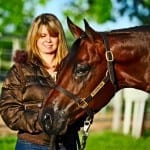 Amy Gumz – I think you can evaluate a foal quickly at a young age. Setting the cuteness factor aside, and their conformation and bone structure are all in place. Form to function needs to be applied as often they aren’t quite strong or coordinated enough to show their precise movement. Also, some foals have “the look,” and that presence or charisma seldom will change.
Amy Gumz – I think you can evaluate a foal quickly at a young age. Setting the cuteness factor aside, and their conformation and bone structure are all in place. Form to function needs to be applied as often they aren’t quite strong or coordinated enough to show their precise movement. Also, some foals have “the look,” and that presence or charisma seldom will change.
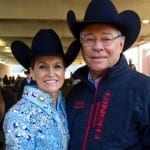
 Kenneth Masterson – While it’s not a total crapshoot, it certainly approaches it. You do like to see balance, a pretty head, a nice soft eye, and correct structure. And, you do like to see a foal that’s curious and likes people. However, after that, foals will change so much as they grow that you may ultimately be somewhat disappointed. (pictured right – a photo of a gorgeous newborn foal Kenneth Masterson sent us by RL Best Of Sudden and out of The Mouse Is Talkin)
Kenneth Masterson – While it’s not a total crapshoot, it certainly approaches it. You do like to see balance, a pretty head, a nice soft eye, and correct structure. And, you do like to see a foal that’s curious and likes people. However, after that, foals will change so much as they grow that you may ultimately be somewhat disappointed. (pictured right – a photo of a gorgeous newborn foal Kenneth Masterson sent us by RL Best Of Sudden and out of The Mouse Is Talkin)
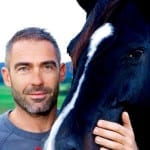 David Maisonnette – Foaling season is the most exciting time of the year as every birth is a surprise. It’s really something emotional at each birth. As soon as they stand up, you can judge the conformation. I can tell you that now the conformation is really different than what we produced on the farm 10 years ago. I love to study bloodlines to try to make the best cross and judging a baby at birth is really judging everything. I am a hock freak and I think it might be one of the first things I check. Of course the head, but we see the head right away so we don t have to wait for them to stand up. I also look at the length of the neck, how the neck is tied into the shoulder, judge back length, how the tail is tied, hock set, wither, etc. As you can see, it’s the whole package, but every year’s a new challenge, and I am never tired of it. Every season teaches us new things for next year. We learn every day and sometimes when one baby stands up, we just say, Wow!
David Maisonnette – Foaling season is the most exciting time of the year as every birth is a surprise. It’s really something emotional at each birth. As soon as they stand up, you can judge the conformation. I can tell you that now the conformation is really different than what we produced on the farm 10 years ago. I love to study bloodlines to try to make the best cross and judging a baby at birth is really judging everything. I am a hock freak and I think it might be one of the first things I check. Of course the head, but we see the head right away so we don t have to wait for them to stand up. I also look at the length of the neck, how the neck is tied into the shoulder, judge back length, how the tail is tied, hock set, wither, etc. As you can see, it’s the whole package, but every year’s a new challenge, and I am never tired of it. Every season teaches us new things for next year. We learn every day and sometimes when one baby stands up, we just say, Wow!
 Mike Hay – I continue to be thankful for every healthy foal. If they are cute faced and have a personality, most owners feel they have hit a home run. To raise a successful show horse these days, all emphasis is on movement and their minds. These things are not known for some time. Many times, I have found their movement comes and goes with their growth and balance. Their minds can be effected by bad management and training. I believe we have to trust our genetics and have the patience to let them grow up a bit for an accurate evaluation.
Mike Hay – I continue to be thankful for every healthy foal. If they are cute faced and have a personality, most owners feel they have hit a home run. To raise a successful show horse these days, all emphasis is on movement and their minds. These things are not known for some time. Many times, I have found their movement comes and goes with their growth and balance. Their minds can be effected by bad management and training. I believe we have to trust our genetics and have the patience to let them grow up a bit for an accurate evaluation.
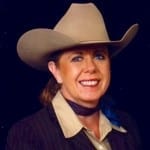 Kathy Smallwood – I look for the WOW factor! The type of foal that will take your breath away. I always say the best time to evaluate is at two days, two weeks and two months. I myself like to see them the minute they stand up. Right from the beginning, you can see if they are balanced. With balance, I want to see a good laid back shoulder with the withers extending back behind the back of the front legs if you drew a vertical line, short strong back and a long croup and hip that ties deep into the hind leg. I’m looking for a neck that ties in high and has lots of length. The babies with shoulder blades that stick out will have room to develop good strong front ends. I also always love a pretty head with a teacup muzzle, wide-set eyes and short little ears that are set close together. Of course, good strong and correct legs are what we strive for. I’ll take lots of pictures and evaluate the babies from them. Pictures are a good tool, and it takes practice but worth the effort. In the end, all bloodlines will develop at different stages, but that WOW factor and balance usually remains constant.
Kathy Smallwood – I look for the WOW factor! The type of foal that will take your breath away. I always say the best time to evaluate is at two days, two weeks and two months. I myself like to see them the minute they stand up. Right from the beginning, you can see if they are balanced. With balance, I want to see a good laid back shoulder with the withers extending back behind the back of the front legs if you drew a vertical line, short strong back and a long croup and hip that ties deep into the hind leg. I’m looking for a neck that ties in high and has lots of length. The babies with shoulder blades that stick out will have room to develop good strong front ends. I also always love a pretty head with a teacup muzzle, wide-set eyes and short little ears that are set close together. Of course, good strong and correct legs are what we strive for. I’ll take lots of pictures and evaluate the babies from them. Pictures are a good tool, and it takes practice but worth the effort. In the end, all bloodlines will develop at different stages, but that WOW factor and balance usually remains constant.
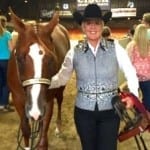 Kathie Kennedy – This is my favorite time of year. My phone beeps all day with baby pictures. Some clients are just showing off theirs and other clients wanting me to look at some they are shopping for. Of course, all of these babies are a risk, but a good one is a good one. I look for the balance over their loin, like to see them growing reasonably even. I want to see a hip that drops into the hind leg naturally with a strong stifle. I look for their head and neck to tie in smooth. I don’t like to see too much length in their pastern and love to see them walk. You can tell a lot about the movement at the walk believe it or not, watch the way they move through the shoulder. When you can see one profile in the stall, and it is built right, I can’t wait to see the baby out of its stall and turned out to see it lope. I am always happy for the breeders because they are the ones that keep the foundation of this industry going.
Kathie Kennedy – This is my favorite time of year. My phone beeps all day with baby pictures. Some clients are just showing off theirs and other clients wanting me to look at some they are shopping for. Of course, all of these babies are a risk, but a good one is a good one. I look for the balance over their loin, like to see them growing reasonably even. I want to see a hip that drops into the hind leg naturally with a strong stifle. I look for their head and neck to tie in smooth. I don’t like to see too much length in their pastern and love to see them walk. You can tell a lot about the movement at the walk believe it or not, watch the way they move through the shoulder. When you can see one profile in the stall, and it is built right, I can’t wait to see the baby out of its stall and turned out to see it lope. I am always happy for the breeders because they are the ones that keep the foundation of this industry going.
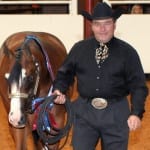 Russ Smith – It’s an interesting question. I’ve always felt that the actual future structure of a horse can be seen when they first stand up. At 30 days, they also show a pretty accurate picture of their future conformation. Of course, breeding has a lot to do with how a foal will finish. If one knows the pedigree, you can usually predict its future conformation.
Russ Smith – It’s an interesting question. I’ve always felt that the actual future structure of a horse can be seen when they first stand up. At 30 days, they also show a pretty accurate picture of their future conformation. Of course, breeding has a lot to do with how a foal will finish. If one knows the pedigree, you can usually predict its future conformation.
 Robin DeGraff – Evaluating babies: 1. Conformation for form to function. We, of course, are looking for that balance in body type. Correct conformation. Lots of bone, body, good feet, significant slope to the shoulder, big hip. We are looking for and breeding for a sound horse that will hold up to the rigors of training and in the show pen. 2. Personality – We look for how the foals react to given situations. We are breeding for quiet, willing and accepting. We feel that the foal that accepts what is going on around it will soak up knowledge quicker, therefore, becoming more trainable. So not only is form to function essential but the ability to capitalize on that form and function through the mind. 3. Movement – We all are looking for that world champion as each crop arrives; it is why we breed. I like to watch them as a group…your best ones rise to the top. We are constantly placing them like a judge would in a class. 4. Eye Appeal – They’ve got to be able to capture not only the judge’s eye but the heart and excitement of a potential buyer.
Robin DeGraff – Evaluating babies: 1. Conformation for form to function. We, of course, are looking for that balance in body type. Correct conformation. Lots of bone, body, good feet, significant slope to the shoulder, big hip. We are looking for and breeding for a sound horse that will hold up to the rigors of training and in the show pen. 2. Personality – We look for how the foals react to given situations. We are breeding for quiet, willing and accepting. We feel that the foal that accepts what is going on around it will soak up knowledge quicker, therefore, becoming more trainable. So not only is form to function essential but the ability to capitalize on that form and function through the mind. 3. Movement – We all are looking for that world champion as each crop arrives; it is why we breed. I like to watch them as a group…your best ones rise to the top. We are constantly placing them like a judge would in a class. 4. Eye Appeal – They’ve got to be able to capture not only the judge’s eye but the heart and excitement of a potential buyer.
 Diane Chilton-Harper – Most foals are filled out at about three months. They look like little images of themselves around 90 days. Many old time breeders taught me that. They change a lot as they continue to grow, but the bones and basic conformation are there from birth. There are a lot of cuties out there; I love this time of year.
Diane Chilton-Harper – Most foals are filled out at about three months. They look like little images of themselves around 90 days. Many old time breeders taught me that. They change a lot as they continue to grow, but the bones and basic conformation are there from birth. There are a lot of cuties out there; I love this time of year.
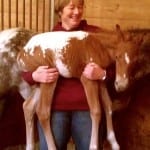 Shelley Donovan – The old saying three days, three months, three years (at least that’s what I think it is) is accurate. Babies will go through lots of stages, some very ugly, but you can see the greatness very early. They have a better self carriage, and the structure is there. Sometimes you will get a surprise, but most of the time, what we see in the first few days is pretty much what we see in the show pen later in life.
Shelley Donovan – The old saying three days, three months, three years (at least that’s what I think it is) is accurate. Babies will go through lots of stages, some very ugly, but you can see the greatness very early. They have a better self carriage, and the structure is there. Sometimes you will get a surprise, but most of the time, what we see in the first few days is pretty much what we see in the show pen later in life.
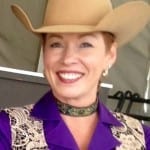 Katie Mitchell – Young foals are great – baby “anythings” are cute. We all love them – I do too, but choosing a prospect is impossible at foal age. Foals change so much from birth to weaning age and beyond. However, many positive traits will show through at the foal age. We just have to hope they stay positive as they grow and mature. For instance, a pretty head will show its face (no pun intended) immediately. You can quickly tell if one has a beautiful or plain head, but I have seen those change with age too. Length of the back, you can see early. These will change with growth, but usually, if they are long they stay long. Legs need time. They are folded up in the womb, so they need time to untangle, straighten and get strong. Most of the time, I look at one young, at a week or so, then, I look at them at a month. I don’t look so much at which foal is better at each age, but which one has made the most dramatic positive changes in that amount of time. The one that makes those changes will keep evolving even after weaning and I can keep going with it into the show pen. The most important thing on these foals if they are to become show horses is to keep them healthy. Foals are like little time bombs. They will all get a little sick at some stage. Just make sure you try to get them well quick and keep them well. That is the most significant advantage for growth.
Katie Mitchell – Young foals are great – baby “anythings” are cute. We all love them – I do too, but choosing a prospect is impossible at foal age. Foals change so much from birth to weaning age and beyond. However, many positive traits will show through at the foal age. We just have to hope they stay positive as they grow and mature. For instance, a pretty head will show its face (no pun intended) immediately. You can quickly tell if one has a beautiful or plain head, but I have seen those change with age too. Length of the back, you can see early. These will change with growth, but usually, if they are long they stay long. Legs need time. They are folded up in the womb, so they need time to untangle, straighten and get strong. Most of the time, I look at one young, at a week or so, then, I look at them at a month. I don’t look so much at which foal is better at each age, but which one has made the most dramatic positive changes in that amount of time. The one that makes those changes will keep evolving even after weaning and I can keep going with it into the show pen. The most important thing on these foals if they are to become show horses is to keep them healthy. Foals are like little time bombs. They will all get a little sick at some stage. Just make sure you try to get them well quick and keep them well. That is the most significant advantage for growth.
 Brent and Julie Harnish – You know the special ones. They have a presence from the very beginning. That presence comes from balanced conformation, a pretty neck that they already hang out in front of them when they move – a look in their eye that shares an equal amount of awareness and confidence. They are strong on their legs and don’t fumble and stumble around. They can lope around their mother in their stall. When turned out into larger areas, they almost float across the ground softly taking every step on the ground. They are good in their shoulder and hold themselves upright as they move around. Follow that with unique coloring and eye appeal that makes you and the judges want to take a second look. It’s a package, and the special ones have the entire package.
Brent and Julie Harnish – You know the special ones. They have a presence from the very beginning. That presence comes from balanced conformation, a pretty neck that they already hang out in front of them when they move – a look in their eye that shares an equal amount of awareness and confidence. They are strong on their legs and don’t fumble and stumble around. They can lope around their mother in their stall. When turned out into larger areas, they almost float across the ground softly taking every step on the ground. They are good in their shoulder and hold themselves upright as they move around. Follow that with unique coloring and eye appeal that makes you and the judges want to take a second look. It’s a package, and the special ones have the entire package.
 Paige Quarterman – With hunt seat babies, analyzing the skeletal structure is all you have as young foals, as generally I believe it’s hard to evaluate movement in foals intended for hunter under saddle at such an early age. As foals age, they begin to show more and more of their athleticism and provide signs as to how they might carry themselves under saddle. As far as conformation, some people tend to zero in on the head immediately. I don’t get too caught up in a pretty face, although it’s all too easy to get entangled in their cuteness. In the same vein, I don’t worry too much about slight deviations in front legs. As foals grow, their chests widen, and certain angular problems self correct. Though it is difficult to assess the neck, the shoulder is readily apparent. For hunter under saddle, the shoulder should be well laid back. Further, I think it is clear to see if a foal is deep bodied which is also linked to a strong topline and tight coupling. It’s important to note that even when using high-quality stallions and mares, eventually a breeding does not go as planned and results in a real head scratcher! But, even those can surprise you once again down the road.
Paige Quarterman – With hunt seat babies, analyzing the skeletal structure is all you have as young foals, as generally I believe it’s hard to evaluate movement in foals intended for hunter under saddle at such an early age. As foals age, they begin to show more and more of their athleticism and provide signs as to how they might carry themselves under saddle. As far as conformation, some people tend to zero in on the head immediately. I don’t get too caught up in a pretty face, although it’s all too easy to get entangled in their cuteness. In the same vein, I don’t worry too much about slight deviations in front legs. As foals grow, their chests widen, and certain angular problems self correct. Though it is difficult to assess the neck, the shoulder is readily apparent. For hunter under saddle, the shoulder should be well laid back. Further, I think it is clear to see if a foal is deep bodied which is also linked to a strong topline and tight coupling. It’s important to note that even when using high-quality stallions and mares, eventually a breeding does not go as planned and results in a real head scratcher! But, even those can surprise you once again down the road.
What do you think? Do you think you can determine the success of a foal at an early age or do you think it takes time? Let us know in the comments section of this article or on our Facebook page.




